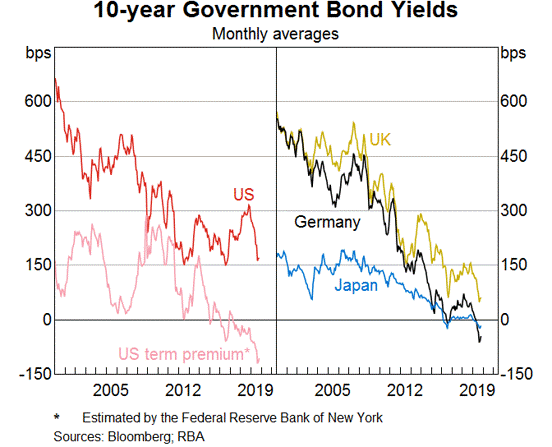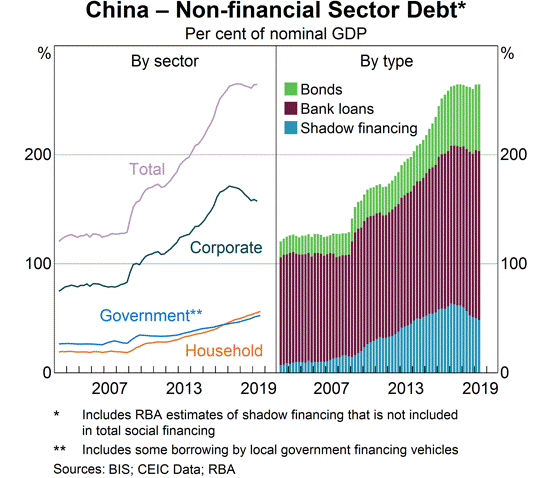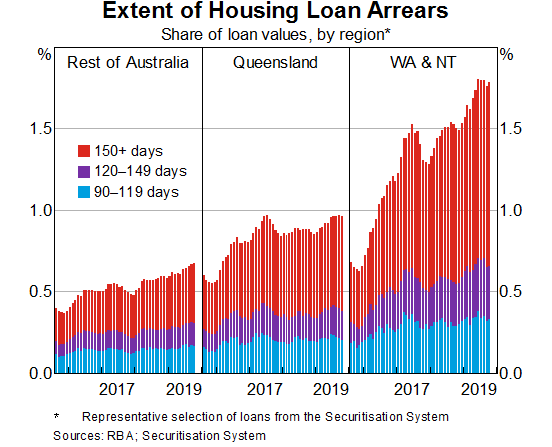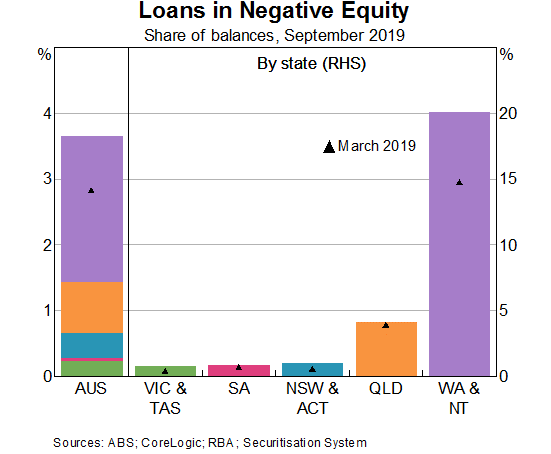Speech Panel participation at the Association of Superannuation Funds of Australia

Michele Bullock
Assistant Governor (Financial System)
2019 ASFA Conference
Melbourne –
My job is to worry. That's what I do, I worry and so my lens is to look at what could go wrong? What really could go badly wrong? And the lens I'm going to take here is financial stability. Now financial stability is sort of a difficult thing to describe. I think it's actually easier to think of the flipside, which is what is financial instability? And everyone remembers the global financial crisis. That was an episode where financial instability basically brought the economy around the world pretty much, not Australia, but the North Atlantic, brought it really, really heavily to its knees.
If you have financial instability that is in your banking system, in your financial sector, it can have very, very big impacts on the real economy. And that means very real impacts on people. You and me. And you saw that overseas in the global financial crisis. You saw unemployment rates shoot up. You saw lots and lots of problems in many, many of the European countries. So this is a big issue.
So I'm going to talk through that lens about what might be some possible risks and threats to financial stability in Australia. I worry a lot. So there's plenty of things I could talk about. But I'm going to concentrate on three today.
The first is what's happening in financial markets. And as possibly some of you are trustees, or maybe work on investment committees, hopefully this might give you a little bit of food for thought about what's going on in financial markets, and the fact that there seems to be no compensation for risk at the moment in financial markets. And I'll tell you why I worry about that in a minute.
The second issue I'm going to talk a little bit about is corporate debt. As some of you may remember, the whole global financial crisis really started from massive amounts of mortgage debt in the United States, and it turned out a lot of those people couldn't pay it back. That sort of was the initial impetus for the global financial crisis, which ended up blowing back onto the banks, and hence the whole thing came down.
The final thing I want to talk about is Australian household stress and household debt. Jo referred to this a little bit, because this is quite important in terms of the way people think about their wellbeing.
So the first thing I want to talk about, as I said, is low compensation for risk. Now, this graph here (Graph 1) shows you 10-year government bond yields. On the right-hand panel you've got the UK, Germany and Japan. The left-hand panel you've got United States 10-year government bond yields. And then there's another line below it labelled the US term premium. Now, the term premium is compensation for basically holding something for 10 years when the outcome is uncertain. And typically, the term premium for 10-year bonds is positive, because you don't know what's going to happen in inflation in the future. You might think it's not going to go up by very much, but you want a little bit of compensation for the possibility that it might.

So two things to take away from this chart. The first is that government bond yields are at historically really low levels. They're negative in some countries. Some of you might realise that in holding a bond to maturity you are actually paying. You don't get any compensation for that. The US term premium, what it's telling you is that people are taking no compensation for a 10-year horizon. They basically think that inflation is going nowhere. Interest rates are going to be pretty much where they are in 10 years' time. Now the Governor has also pointed out that it's not surprising in some sense that interest rates have come down, because it partly reflects a savings/investment demand supply, if you like. So there's lots of savings and there's not so much investment, so you expect interest rates to come down. But it's also true that certainly some, including Australia, but other central banks are lowering interest rates. The economic outlook and the outlook for inflation isn't very high.
So you might say that's fine, but this is still very unusual. And as risk-free rates are coming down, people are searching for yield. They're looking for other things to invest in, and that's pushing up asset prices in all sorts of other places. At the moment, notwithstanding the fact that there's a lot of uncertainty about the global economy, and a lot of uncertainty about economies generally, corporate bond spreads are actually at historically low levels. That's saying that there's no compensation for the risk that some of these corporates in fact might face should there be a global economic downturn.
So what does this all mean? Why might this be a worry? Well, the reason it might be a worry is if things snap back, if for example, inflation reasserts itself, so you see the traditional relationship between unemployment and inflation reassert itself, you might see a snapback in these risk-free rates. If that happens, you might see asset prices fall in other places, and if that happens, and people are in debt, and they've got lots of leverage, you've potentially got issues for the financial system.
It might be that the economies around the world in fact continue to not perform very well, and trade tensions worsen, and all those sorts of things, in which case you'd have to wonder about the financial viability of some corporates. So this is all just saying that you've got these really low rates of interest. You've got these really low risk premia, and you've got an uncertain world, and something just doesn't seem right about that. So the worry for me is that if it snaps back it'll catch a lot of people napping.
I mentioned corporate debt, which is the second thing I wanted to briefly talk about. Corporate debt has been rising in a number of countries overseas, particularly Canada, France, and the United States. In some parts of the US corporate debt market there's been a very large increase in leveraged loans in the United States. So these are loans that are, they're loans to companies that perhaps aren't great credit risks. They're not as far up the asset quality spectrum as others. That's been rising quite quickly. So some people are worrying a bit about that.
I think the country that we've worried most about in the last little while has been China. Now China, what you've seen from this graph (Graph 2) on the left-hand side, you can see that the total debt of the nonfinancial sector in China is around about 260%, 265%. It's much higher than any other country at a similar stage of development. And the rate at which it rose through that period, through 2007 up until about 2016, the rate at which that rose and the rate at which corporate debt in particular rose, suggests to you that some of the credit quality here was not real good.

There's some state-owned enterprises that perhaps have been investing here unwisely. That might mean that there are potential problems coming down the track here. You'll notice it has turned down, and that's been partly as a result of the efforts of the Chinese government to try and cap this growth in debt. Because you can see from the right-hand panel that it's been driven, the bottom, the blue, sort of bit at the bottom, that's the non-bank financial sector. That's the non-bank sector that has been driving a lot of this growth, and some of the smaller banks are very exposed to this non-bank financial sector. It's not transparent. It's not well-regulated, and the concern is that there's been a lot of investment in companies, and perhaps state-owned enterprises, that they're going to find difficult paying these debts back.
So this is the issue, and the worry for Australia is that that if China has a financial crisis that will blow back not so much to us in a direct sense financially, but it will blow back through the economy, and then ultimately possibly onto the financial sector. Now on Australian household debt, Jo already highlighted that we do have very high household debt in Australia. It's around about 190% of household disposable income. The point I want to make here though, is that although the level of debt is quite high in Australia, its distribution is actually quite positive in terms of risk. So if you look on the left-hand panel (Graph 3), you'll see that the … These all along the bottom, these are income quintiles. So one is the bottom 20% of income earners. Two is the next 20%, et cetera.

What you'll see here is that three-quarters of the debt is actually owned by households that sit in the top 40% of the income distribution. So that's actually a positive thing. So if you just look at the total debt, it looks quite high. But if you look at the distribution that suggests to you that actually maybe it's okay, because people in the higher income distributions, they actually have the capacity possibly to meet their payments. They're less likely to become unemployed. You'll see the similar thing in the right-hand panel, which is the median debt to income ratio. You'll see that the dots show you where it was in 2003/2004, and the bars are the more recent period. You'll see that it's risen across all of the income quintiles. But again, the high debt to income ratios sit with the households that have higher income. So that's a positive thing.
Another signal perhaps that might be a signal of stress is housing loan arrears. And the left hand panel here (Graph 4) shows you the rest of Australia, aside from Queensland, WA and the NT. The thing I want you to take away from this, is that housing loan arrears have been rising. They're still pretty low in absolute levels, but they're actually rising mainly because of Western Australia, Northern Territory and Queensland and those are the economies that have been most badly affected by the wind back of the mining investment boom. Those economies have been quite badly affected. They've seen rises in unemployment, they have seen in fact, population decreases in some cases. So although arrears are rising, it's actually reasonably concentrated in a couple of states. And the bank's exposure to those states is actually reasonably contained. So this, I think, also is positive for the banking sector.

And the final thing I wanted to talk about with respect to household stress is something that people worry about with the fall in housing prices, and that's loans in negative equity. So the left hand bar (Graph 5) shows you the share of loans in negative equity, the share of total balances in all of Australia, and it's around about 3.5%. Now, negative equity in itself is not necessarily a problem because, provided you've got a job and you're continuing to pay your loan off, it's not a big deal if you're living in your house. Where it becomes more of a problem is if you lose your job, you need to sell your house in order to meet your debt repayments, and your house isn't worth as much as your debt. That's when it starts to be a problem. So we can see it's actually not a huge problem in Australia as a whole.

If you look at the right-hand panel by state, and you'll notice that the vertical axis is different here, you'll see that in WA and the Northern Territory around about 20% of loans are in negative equity. So the houses are worth less than their debt. And given that those states also are experiencing problems with unemployment, this might be a concern because it might make it more difficult for people to get themselves out of the debt trap. So on the one hand, there are pockets of stress in the Australian household sector at the moment, but broadly I think, although we're still continuing to monitor it, broadly, it seems that the pockets of stress are relatively contained, and that there's reason to think that the people that hold the debt actually have the ability to service it.
So to wrap up, I guess what I'd like you to take away from this is that yes, we've got an economy at the moment that is slowing. There are some things to be slightly concerned about, and we'll continue to monitor them. If you're thinking with your investment hats on, I think you should be thinking about what are some of the worst case scenarios that might happen. And that's the sort of thing I'm talking about here. It's worst case scenarios, because I think if we all become complacent in a world that … It's growing and it's not growing too fast and it's not growing too slow, but it's muddling along, we might become a little bit complacent in our investment choices. So I would challenge you just to think a little bit outside the box, and think about whether or not there might be some issues in thinking about investments that you should be considering going forward. Thank you.
Questions and Answers
Moderator: Wonderful. We're just going to pop over the comfy chairs so we can get some Q&A going. Michele, thank you very much for your presentation and I'm going to have my first question to Michele about bonds. And I think there's certainly some interesting analysis here on risk premium, but are negative bond yields sustainable in the medium term?
Michele Bullock: Well that's an interesting question. I think we think they're not and that's what worries us. But in an environment at the moment where you have slowing growth, you have governments … Well, let me go back a step. The point I made at the beginning, which was that interest rates are the price that clears the supply and demand, so it's investment and savings. At the moment, and I think Jo highlighted this, investment actually is not doing very well and it's not doing very well because everyone's uncertain. They don't want to invest. So while ever we've got this situation, I think that the downward pressure on bond yields is going to remain.
Is it normal to have bond yields basically giving … You're paying effectively to carry the bond. There's certainly lots of institutional investors who are prepared to carry them, but in the long run you would hope that you would have an economic environment where that wouldn't be necessary, that you'd have an environment of stronger investment, which would mean that interest rates would be rising, inflation would be rising and bonds would not be negative anymore. I mean, if we're in this world then this is a very sad world we're in.
Moderator: Michele, I'm conscious about one of your statements that made me feel better about the world, was about household debt. I think there has been a sort of national obsession about the high level of household debt on average, but what I'm hearing is distributionally the RBA is comfortable with it, because it's focused on high income earners. Is that the right takeaway for us and the audience?
Michele Bullock: I think that is the right takeaway. There's a lot of focus on the headline figure, but the distribution is important. As I highlighted in that graph, three quarters of the debt is held by people in the top two income, top 40% of income, and that's positive. And the other thing we know about households, as well, is that they are actually making quite a lot of prepayments on their loans. The recent reductions in interest rates, as well, there are signs that people aren't actually using that to go out and spend. They're actually using it to pay off their debt. Now, in one sense, that's not helpful for the economy, but it's helpful for stability, because it just brings closer the day, at which people feel more comfortable with their level of debt. Then they can go out and spend. It doesn't help right now, but it's good for stability. It's good for the household balance sheet. I think signs at the moment are that people are just being a little more cautious.
Moderator: Michele, no implications, in terms of financial stability with Brexit?
Michele Bullock: Well, the thing that worries me about, just generally this whole geopolitical situation, is that it's already been highlighted. It just increases uncertainty. It makes people unwilling to invest. We just muddle along. Interest rates remain really low, and we remain in this sort of stasis, almost. It's sort of, we're not going anywhere. What we really want is more investment, more growth, more inflation. That would be good for financial stability. A lot of people highlight the fact that it's sort of difficult for banks to make profits, in very low interest rate environments. There's always a bit of a tension between competition and stability, but profitable banks are good for financial stability.
Moderator: That's something, obviously, RBA is very aware of, in terms of the importance of having solid performing banks, in terms of providing stability to the economy.
Michele Bullock: Yeah, we want competition, but we also want the banks to be solid and resilient and stable, which they are. But in very low profit environments, as you can observe from some of the European banks, it's very challenging for them. If they're undercapitalised, and they're not resilient, they don't lend. When they don't lend, there's no investment. It all builds on itself. Financial stability is key to making sure that the economy performs well.